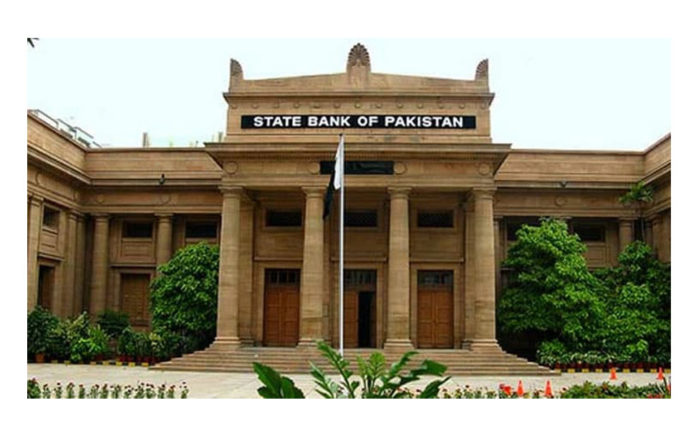 The central bank kept the benchmark interest rate unchanged at 7 percent on Friday, while viewing growth and inflation expectations as well-anchored, although it said Covid-19 was still posing challenges to the economic outlook.
The central bank kept the benchmark interest rate unchanged at 7 percent on Friday, while viewing growth and inflation expectations as well-anchored, although it said Covid-19 was still posing challenges to the economic outlook.
“At its meeting on January 22, 2021, the Monetary Policy Committee (MPC) decided to maintain the policy rate at 7 percent. The MPC noted that since the last meeting in November, the domestic recovery has gained some further traction. Most economic activity data and indicators of consumer and business sentiment have shown continued improvement. As a result, there are upside risks to the current growth projection of slightly above 2 percent in FY21,” the SBP said in a statement.
Moreover, the SBP illustrated that on the inflation front, recent out-turns are also encouraging, suggesting a waning of supply-side price pressures from food and still-benign core inflation. However, the MPC was of the view that the increase in the utility tariff may cause an uptick in inflation, which is likely to be temporary- given excess capacity in the economy and well-anchored inflation expectations. The MPC concluded that as a result, inflation is still expected to fall within the previously announced range of 7-9 percent for FY21 and trend toward the 5-7 percent target range over the medium-term. Nevertheless, the MPC felt that the existing accommodative stance of monetary policy remained appropriate to support the nascent recovery while keeping inflation expectations well-anchored and maintaining financial stability.
The SBP said that the financial conditions remain appropriately accommodative at this early stage of the recovery, with the real policy rate in slightly negative territory on a forward-looking basis. Private sector credit has seen an encouraging elevation since, driven by a continued rise in consumer and fixed investment loans on the back of SBP’s refinance facilities. As demand recovers and inventories fall in some sectors, working capital loans have also picked up for the first time since the onset of the Covid pandemic, although their level remains lower than last year.
The SBP said that the economic recovery underway since July in FY 2020 has strengthened in recent months. “Large-scale manufacturing (LSM) grew by 7.4 percent (y/y) in October and 14.5 percent (y/y) in November. The manufacturing recovery is also becoming more broad-based, with 12 out of 15 subsectors registering positive growth in November and employment beginning to recover. So far this fiscal year, LSM has grown by 7.4 percent (y/y), against a contraction of 5.3 percent during the same period last year. Nevertheless, the level of manufacturing activity generally remained below average levels in FY19, pointing to continued spare capacity in the economy,” it said.
“On the demand side, cement sales remain strong on the back of rising construction activity, POL sales are at two-year highs, and automobile sales are also rising in both urban (motorcars) and rural (tractors) markets. While social distancing is still affecting some service sectors, wholesale, retail trade and transportation are expected to benefit from improvements in construction and manufacturing activity,” it said.
“Following five consecutive months of surpluses, the current account registered a deficit of $662 million in December. While remittances and exports continued to grow steadily, the trade deficit rose due to a rise in imports of machinery and industrial raw material, in line with the pick-up in economic activity. At the same time, wheat and sugar imports also rose to close demand and supply gaps in the domestic market. Nevertheless, the current account remained in surplus during the first half of FY21, at $1.1 billion compared to a deficit of over $2 billion during the same period last year. This improvement has been mainly driven by workers’ remittances, which have remained above $2 billion every month during the current fiscal year due in part to travel restrictions and supportive policy measures taken by the government and SBP that have increased the use of formal channels,” said SBP Governor Reza Baqir, while announcing the monetary policy during a press conference.